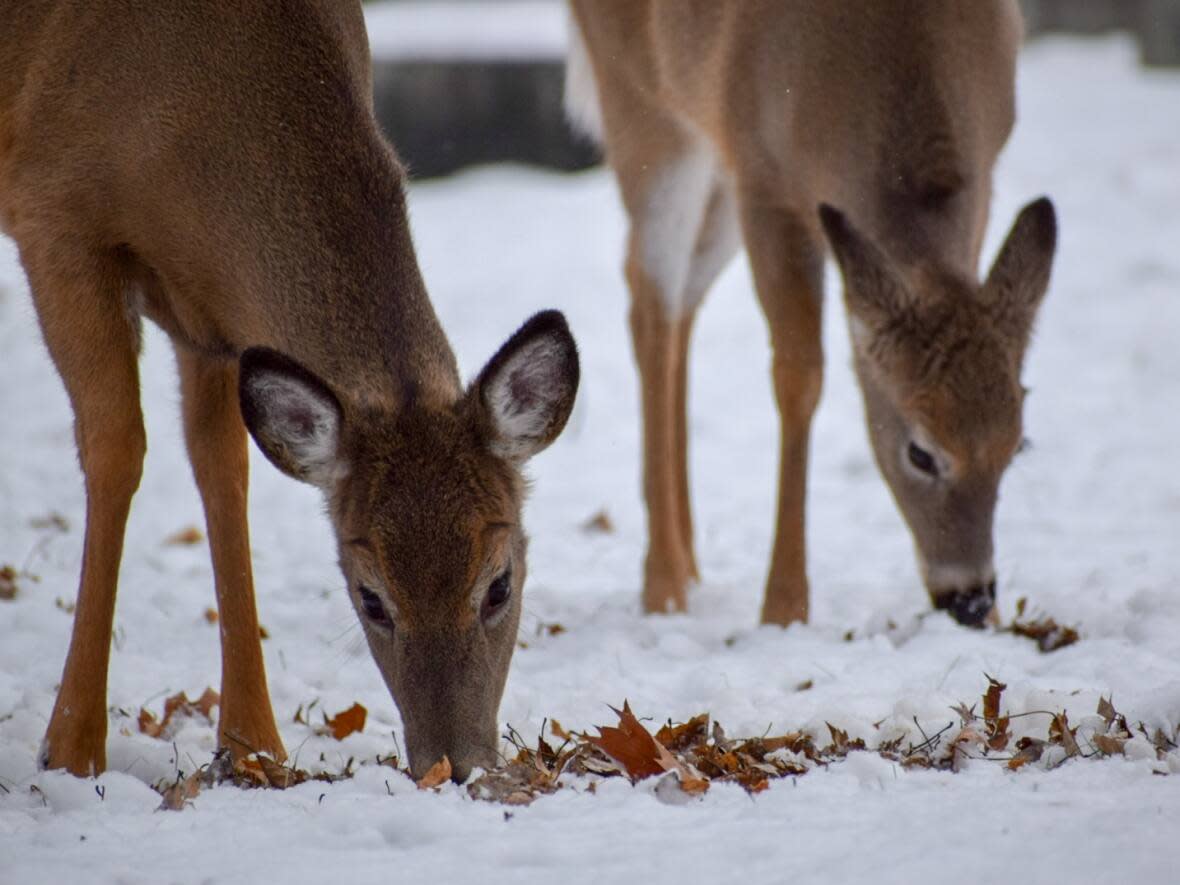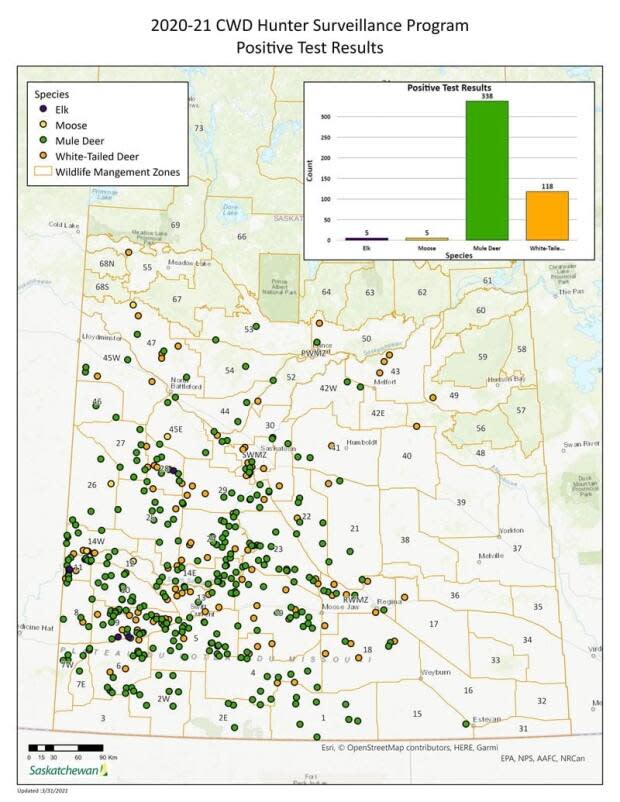Chronic wasting disease ravaging deer population near South Saskatchewan River

Chronic wasting disease is devastating deer populations near the South Saskatchewan River Valley, with as many as 70 per cent of male deer testing positive for the fatal nervous system disease.
"It's unfortunately gotten to a point where we are seeing such high infection rates where we do expect some impacts on the population," said Iga Stasiak, a wildlife health specialist with the Ministry of Environment.
CWD was first recorded in Saskatchewan in 1996 on a game farm, but has since moved into the wild deer, elk and moose populations, with wildfire-like infection rates in some areas.
The land near the South Saskatchewan River Valley and the town of Outlook, 93 kilometres southwest of Saskatoon, provides a prime habitat for deer and has become a breeding ground for CWD.

"We're seeing it as high as 70 per cent in male deer," Stasiak said.
"This is a fatal disease in animals that succumb to the infection within typically two years. So that is particularly concerning."
CWD is spread through urine, feces and saliva, with disease proteins remaining infectious on the land for years and possibly decades after they are deposited.
"The environment has unfortunately gotten contaminated," Stasiak said.
CWD is a prion disease and in the same family as bovine spongiform encephalopathy (BSE), more commonly known as mad cow disease.
BSE devastated the British cattle industry in the 1980s and 1990s and is linked to variant Creutzfeldt-Jakob disease (vCJD) in humans, a fatal prion disease that creates holes in infected brains giving them a "sponge-like" appearance.
Stasiak said that, unlike BSE, there is no evidence to show CWD is transmitted to people through eating infected animals.
However, it is fatal in deer, elk and moose, and there is a theoretical risk to humans, Stasiak said.
"We can't be 100 per cent certain. That's why the recommendations are there to avoid eating animals that are known to be infected."
Hunters, conservation officers and butchers in the Outlook area are increasingly getting positive CWD test results back on animals that showed no signs of being sick.
It's only later, in the end stages of CWD, that animals are visibly unwell, looking malnourished and acting disoriented, Stasiak said.
Darryl Sander, owner and operator of Sander's Meat Processing in Beechy, 188 kilometres southwest of Saskatoon, said that even though there is no evidence showing CWD is transmitted to people, hunters are worried about eating deer meat.
"They're just asking me, 'What should I do? I just shot this deer, should they get it tested first? Do I process it and then get it tested? Do I take a chance and eat it?'" Sander said.
CWD testing takes about six weeks to complete, with government officials collecting animal heads that are then taken to a provincial laboratory for examination.
In the meantime, hunters have often paid hundreds of dollars to have the animal cut and wrapped at an abattoir.
"It's going to cost you to process it, but it's up to you if you want to do that or not," Sander said.
When they see a deer not behaving well the answer comes back more often and more often that it's chronic wasting disease - Ted Glass, conservation officer
Despite the wait for test results, conservation officer Ted Glass said testing is crucial to managing CWD.
"I think everyone, when they see a deer not behaving well, the answer comes back more often and more often that it's chronic wasting disease."
Glass, who is based out of Kindersley, about 148 kilometres straight west of Outlook, said he's seen too many deer with CWD to keep track over the years.
"Initially, the animal looks very normal, very natural, and then the symptoms come on awfully quick and you'll see symptoms of disorientation. They look malnourished. You can start seeing ribs and the spine. Their head will droop. And it becomes clear, very fast, that there's something not quite right with that deer."
In addition to testing, Glass said hunters should avoid transporting carcasses, which can bring the disease to new areas.
Stasiak agreed and said the province is working on programs to manage CWD in deer.
One option is increasing hunting quotas on male deer, who are thought to have higher rates of infection than females because of their rutting behavior, which puts them in contact with infected feces and urine.
"The other thing that is quite important is avoiding things like baiting and feeding. We want to limit the contacts and try to reduce transmission in that way," Stasiak said.

 Yahoo Movies
Yahoo Movies 
